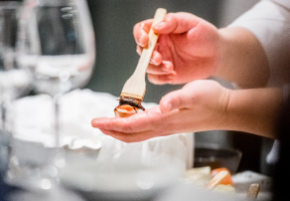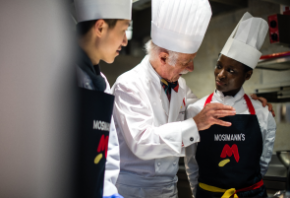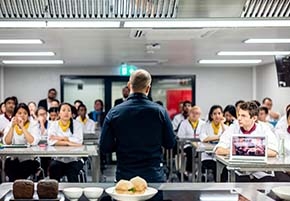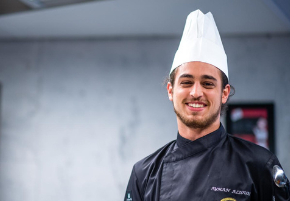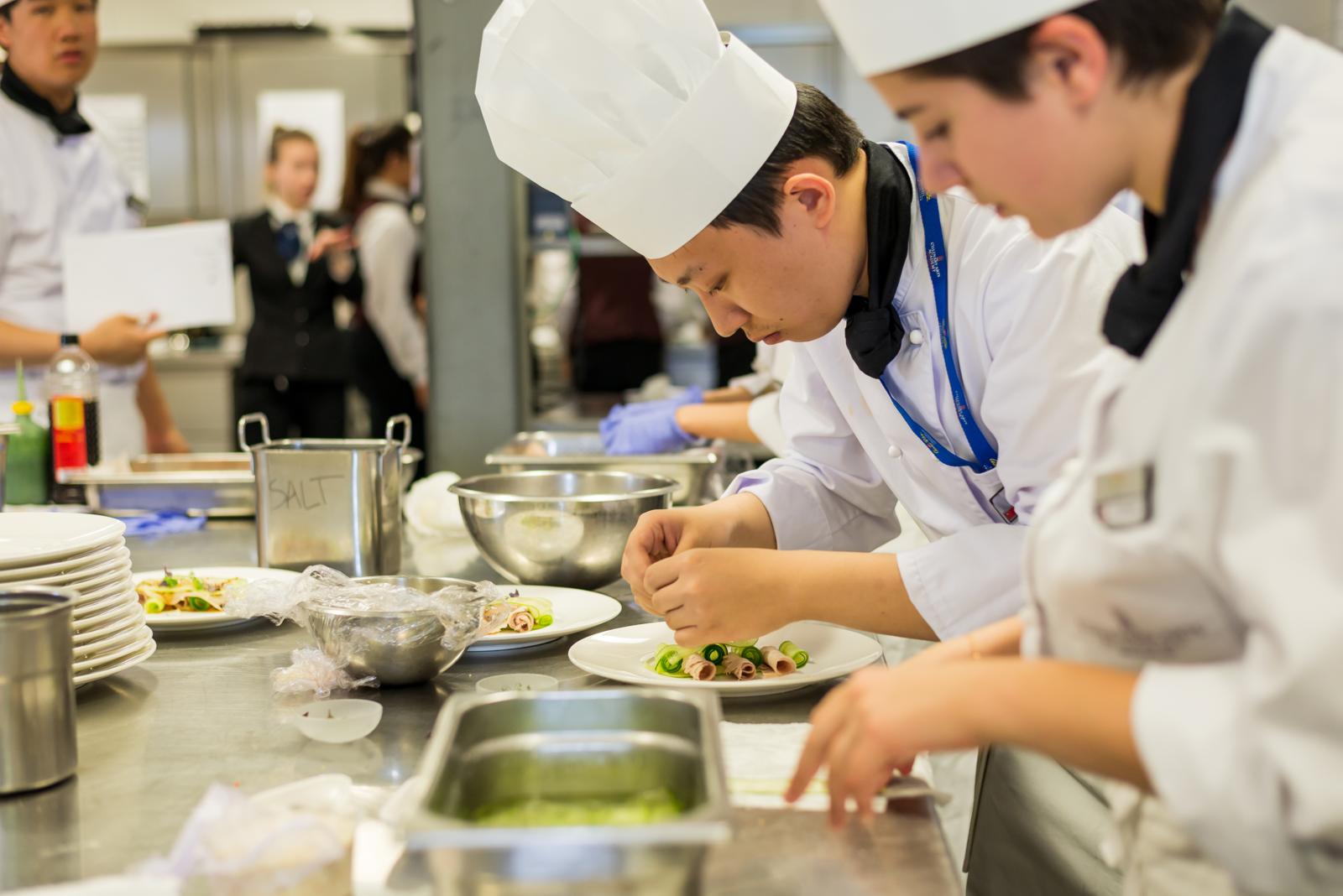- About
- Programs
- Campus Life
- Career Services
- Admissions
- News & Events
- Alumni
Science Or Art? Why Culinary Students Must See Food As Both
Chef Instructor at Culinary Arts Academy, Francesco Versari, talks about today's current food trends and how he’s preparing students to navigate them.
We, the consumers, determine the latest trends in food development. Walk into any supermarket and it’s not hard to see what today’s trends are in food.
Yet, quite often, our demands are incompatible. We want to hit all the marks of a healthy meal option, but don’t want to compromise on taste and texture. We prefer low-fat, low-sugar, and low-sodium, while also demanding our food to be organic and chemical-free.
As a chef and food developer, here are three challenging food trends I’m encountering right now, and how I’m preparing students to navigate competing demands in the food industry.
Health-conscious
While healthy options and diet alternatives have always been a priority for consumers, the challenge for food developers and chefs is that their demands are ever-changing.
What is considered ‘healthy’ is shifting across all food categories. We now have a plethora of options including: high-fiber, extra vitamins, pre- and probiotics, plant-based, and protein-packed, to name a few. At the same time, consumers are growing more concerned about food additives and preservatives, which creates a significant challenge for food developers trying to tick all the boxes.
Sustainably-made
In recent years, consumers have become more interested in how their food is grown, sourced, and packaged, which has greatly influenced food and manufacturing processes.
Packaging now regularly features keywords like: ‘sustainability-sourced’, ‘free-range’, and ‘grass-fed’. Many are demanding sustainable packaging too, and even willing to pay more for foods in recycled or recyclable materials or opting for refillable packaging.
While this is a noble aspiration and should be pursued—especially in light of climate change—consumers need to look at the big picture and not be fooled by clever marketing. For a food product to be truly sustainable, every component of the production process needs to hit the mark.
Consumers need to look at the big picture and not be fooled by clever marketing.
Age-friendly
Another emerging trend are foods that cater to an aging population. With this demographic growing around the world, the market for foods that are easily digestible, chewable, nutritiously-dense, and mild in flavor is growing as well.
To test students' creativity and problem-solving skills this term, I’ve asked them to develop ready-made meals from scratch that follow these specifications, but maintain the same quality of taste. It's been quite a challenge!
Encouraging students to think methodically
To navigate changing consumer trends, I believe students must learn to see food as equal parts science and art. They must be able to think about food in a methodical manner.
That’s why I teach students to apply a scientific approach to food development—the same approach a Michelin star chef would use to develop a menu and the same approach I’ve used in my own work as a chef in luxury hotels. When students approach food in this way, they become more adaptable and creative in their ability to meet market demands.
When students approach food in this way, they become more adaptable and creative in their ability to meet market demands.
Chef instructor, Francesco Versari, has been teaching at Culinary Arts Academy Switzerland since 2017. Previously, he worked as a chef de partie at the historic luxury hotel Beau-Rivage Palace and as sous chef at the five-star Lausanne Palace & Spa Hotel in Lausanne, Switzerland. Chef Francesco has a BSc in Food Science, a MSc in Food & Nutrition, numerous certifications, and is currently pursuing his doctorate in Sustainable Food Quality for Health.


